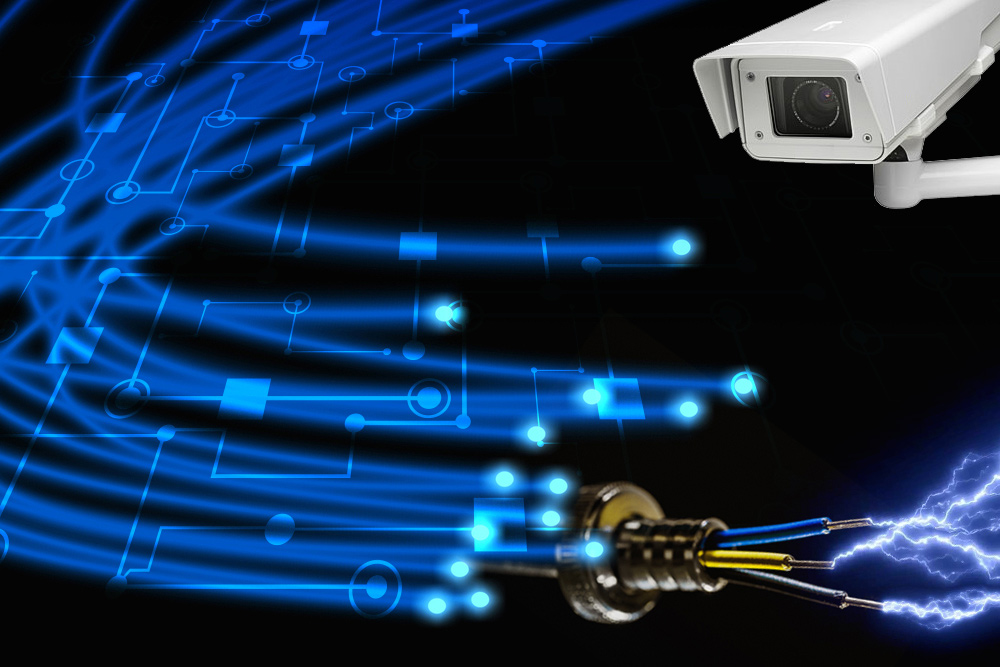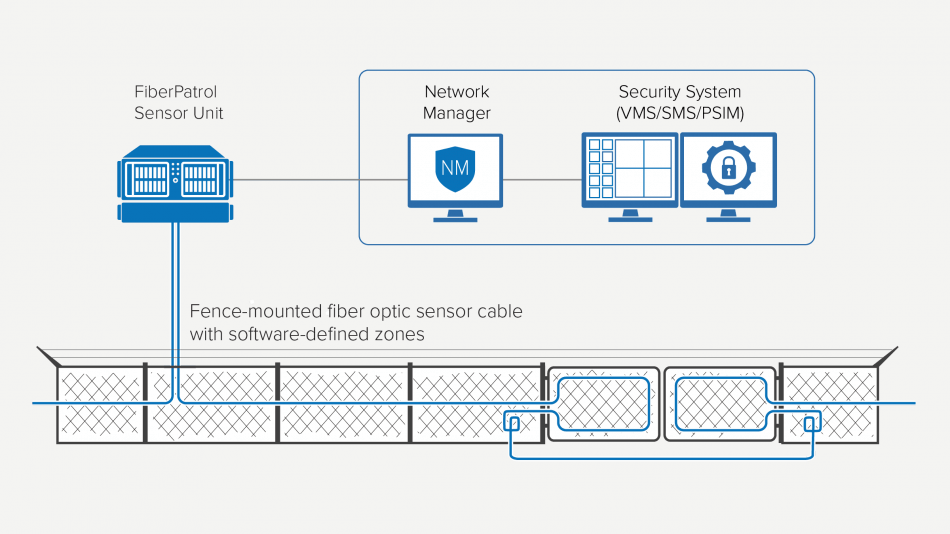How to Set Up a Fiber Optics Infrastructure for Security Installations in Commercial Spaces
How to Set Up a Fiber Optics Infrastructure for Security Installations in Commercial Spaces
Blog Article
Secure Your Building With Reputable Fiber Optic Security Solutions
In a period where security dangers are increasingly advanced, the demand for efficient defense options is extremely important. Fiber optic safety and security systems attract attention by providing exceptional dependability and efficiency, leveraging advanced light transmission innovation to boost surveillance abilities. These systems not just offer resistance to electromagnetic interference however additionally assure long-term expense effectiveness via reduced maintenance demands. Nevertheless, the decision to invest in such an option entails mindful consideration of different aspects. Recognizing the intricacies of fiber optic safety and security can light up the course to securing your property better. What elements should be checked out to maximize your investment?
Advantages of Fiber Optic Protection
Fiber optic safety services offer a series of benefits that make them progressively important in today's electronic landscape. One of one of the most considerable advantages is their remarkable bandwidth ability, which enables the transmission of large quantities of data over lengthy distances without significant signal destruction. This capability is particularly useful for safety systems that count on high-def video security and real-time monitoring.
In addition, fiber optic cable televisions are naturally much more safe and secure than conventional copper circuitry. They are immune to electromagnetic disturbance, making them less at risk to hacking or eavesdropping. This enhanced safety and security is vital for shielding sensitive data and maintaining the integrity of monitoring systems.
Moreover, optical fiber are more long lasting and immune to ecological elements, such as dampness and temperature level fluctuations, making certain long-term reliability and minimized maintenance expenses. The light-weight nature of fiber optic cables also simplifies setup procedures, enabling greater versatility in system style.
Just How Fiber Optic Equipment Work
In contemporary safety applications, the operation of fiber optic systems relies on the principles of light transmission via adaptable glass or plastic fibers. These fibers are made to bring light signals over fars away with minimal loss, making them perfect for transmitting data related to security surveillance. The core of the fiber, bordered by a cladding material, ensures that light signals continue to be consisted of within the core with a phenomenon referred to as total internal representation.
When incorporated right into safety and security systems, fiber optic cable televisions can transmit data from numerous sensors, such as cameras, motion detectors, and alarm systems, to a central monitoring station. The high bandwidth capacity of fiber optics permits the transmission of huge amounts of data simultaneously, enabling real-time monitoring and punctual response to prospective dangers.

Sorts Of Fiber Optic Safety And Security Solutions
Numerous types of fiber optic security options have emerged to boost monitoring and defense across various environments. One prominent option is fiber optic perimeter invasion discovery systems (PIDS), developed to check and protect residential or commercial property borders through the detection of resonances and disturbances along fiber optic cords. These systems give real-time notifies, you could check here making it possible for timely reactions to unauthorized gain access to attempts.
One more reliable option is fiber optic video clip surveillance. This technology leverages high-definition cameras linked via fiber optic cable televisions to transfer video clip information over fars away without considerable loss of top quality. This arrangement is particularly helpful in large locations, such as flight terminals and commercial websites, where conventional copper cords might fail.
In addition, fiber optic sensors are increasingly used for environmental tracking, identifying adjustments in temperature level, stress, or acoustic signals that could suggest safety violations or harmful problems. These sensors use high level of sensitivity and accuracy, making them optimal for important framework defense.

Installment and Upkeep Tips
Reliable setup and maintenance of fiber optic safety solutions are important for guaranteeing their optimal efficiency and long life. Fiber optic cords ought to be transmitted safely, avoiding sharp bends or spins that could endanger their integrity.
Throughout installation, it is suggested to carry out comprehensive screening of the system to confirm that all elements are working correctly. Routine upkeep checks ought to be set up to examine the fiber optic wires for any type of indicators of wear or damage, along with to ensure that links remain protected. Cleansing the connectors regularly is also important to avoid signal loss because of dirt or particles.
Additionally, maintaining an upgraded inventory of mounted components and their specs can assist in easier troubleshooting and upgrades. By adhering to these setup and upkeep pointers, homeowner can take full advantage of the performance of their fiber optic security image source services, making sure a reliable defense against prospective hazards.
Contrasting Prices and Effectiveness
When assessing fiber optic safety options, recognizing the equilibrium in between prices and effectiveness becomes critical (security fibers). Organizations should think about the in advance financial investment, ongoing upkeep expenditures, and the long-term value these systems supply. While fiber optic systems might need a higher preliminary setup cost compared to traditional copper wiring, their sturdiness and decreased vulnerability to electro-magnetic interference usually equate to reduced upkeep expenses in time
Efficiency is another crucial factor; fiber optic security systems offer boosted information transmission speeds and improved integrity. They can cover bigger distances without signal degradation, making them ideal for large properties or remote areas. The high view it now bandwidth capacity sustains advanced protection applications, such as high-definition video clip monitoring and real-time monitoring, which are necessary for extensive protection administration.
Inevitably, the option in between expense and performance ought to be led by certain security requirements and risk evaluations. Organizations must examine their unique demands, taking into consideration elements like home dimension, safety and security hazards, and technological innovations. By conducting a detailed cost-benefit analysis, stakeholders can make educated choices that straighten with their safety and security purposes while ensuring a sound investment in fiber optic modern technology.
Verdict
In final thought, fiber optic security solutions supply substantial advantages in terms of performance, integrity, and resistance to environmental interferences. Inevitably, the adoption of fiber optic technology stands for a forward-thinking technique to safeguarding residential or commercial properties versus progressing safety and security threats.
Report this page